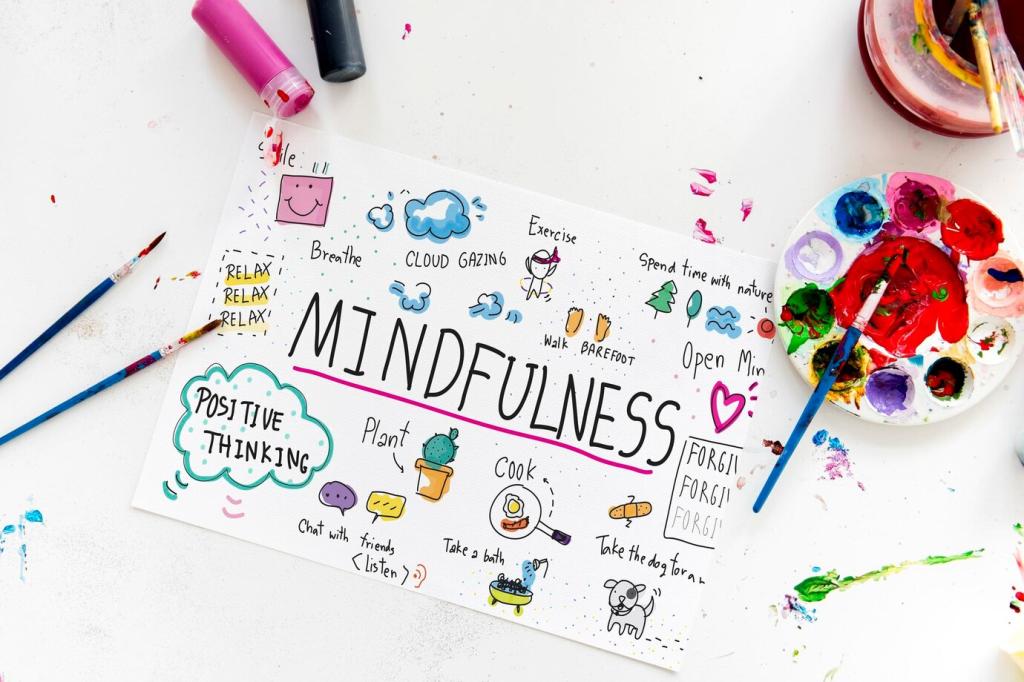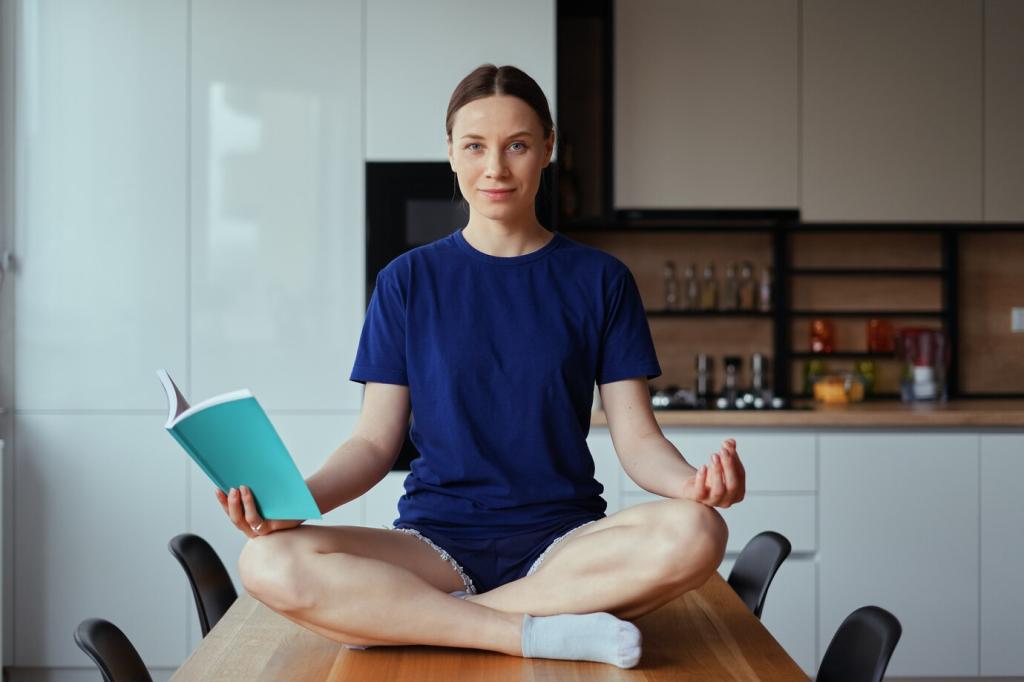Make It Work in Shared or Small Homes
Keep a basket with cushion, candle, and journal. Roll out a mat, place a small tray, and you’re home. When practice ends, pack it neatly. The ritual of setup and teardown becomes part of arriving, especially in multipurpose rooms.
Make It Work in Shared or Small Homes
Tell housemates or family your practice window and invite cooperation. A door sign, headphones, or a gentle bell lets others know. Kind clarity protects your space while modeling respect, and you can share boundary scripts that worked for you.




